1959 Corvette Overview – The Ultimate Guide
Even Bill Mitchell, General Motors Design Chief, commented that the GM Styling practices of that era were too quick to “ladle on chrome with a trowel.” As the 1959 Corvette was nearing production, it was decided that, once again, the design teams would re-visit Corvette and clean up the overall appearance of the car.
Ironically, the 1958 ‘Vette, along with other Chevrolet models, had been the subject of more than a little criticism and ridicule for it’s excessive use of chrome plating and trim. As the previous model year began drawing to a close, Chevrolet basked ever so briefly in the fact that they had finally achieved sales and marketing success with the 1958 Corvette.
To the credit of all involved, the 1959 Corvette was “cleaned up” considerably. For one, the chrome “suspenders” were removed from the design, providing Corvette with a more swept-back look that was synonymous with speed. For another, it was decided that the faux hood louvers would be eliminated, returning the Corvette to a semblance of its former self. While these features were key identifiers of the 1958 Corvette, there was no question that the elimination of the excessive chrome would reduce weight and help increase performance.
Much like the exterior of the Corvette, the interior received minor, but significant updates as well. Both the door handles and the armrests were repositioned and a small-item storage compartment was added beneath the passenger side grab bar.
In addition, both the driver and passenger seats were redesigned to offer increased lateral support of their occupants. All tachometers now indicated up to 7,000 rpm and offered redline and safe limit indicators. Sun visors were introduced to the 1959 Corvette as a new option and concave instrument lenses replaced the flat covers of the 1958 Corvette, thereby reducing sun glare (and other reflections) that might cause a driver to become distracted.
Lastly, a T-handle manual transmission lockout was included to prevent drivers from accidentally putting their Corvettes in reverse. As with the 1958 Corvette before it, the powertrain of the ‘59 Corvette was unchanged from previous years – with one exception: the addition of trailing radius rods. These trailing rods were introduced to help counteract rear-axle windup, while also contributing to a softer overall ride and noticeably less rear-end shifting while driving on uneven or irregular surfaces. In addition to the trailing radius rods, Chevrolet began offering even stiffer springs as part of the heavy-duty brakes/suspension option (RPO 684) that had been originally introduced as an option on the 1957 Corvette.
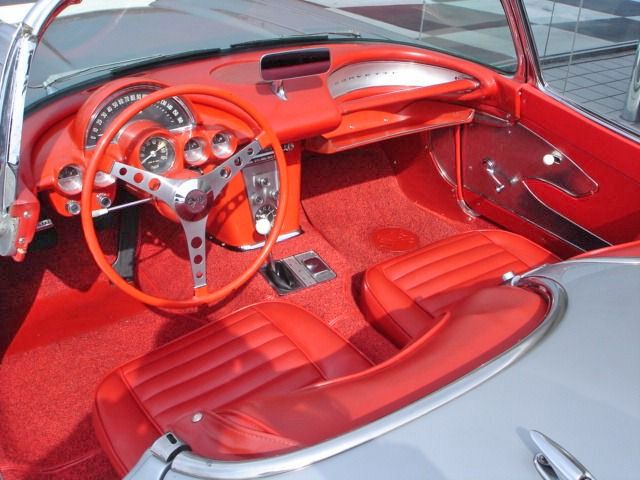
The addition of both of these new components helped produce consistently better handling and better handling also meant better overall performance, and the 1959 Corvette proved it at the test track. With quarter-mile times of less than 15 seconds and a 0-60 mph time of fewer than 8 seconds, the 1959 Corvette was considered to be remarkably fast – and notably fast even by today’s standards. The top-end “fuelies” (fuel injected) Corvettes were rated at 290 horsepower with a top speed of 128 miles per hour when mated with the 4.11:1 final drive.
DID YOU KNOW: The 1959 Corvette was the only production year where Chevrolet included an option of purchasing a turquoise soft top. Also, the 1959 Corvette marked the first year where consumers could purchase an all black interior. Lastly, 1959 marked the last year in which Chevy Corvette sold less than 10,000 units in a given model year.
Lastly, the braking system of the 1959 Corvette received some upgrades. Several factory options including sintered-metallic linings (RPO 686) were introduced under the development of General Motors Delco-Moraine Division. These new linings were comprised of three pairs of lining segments that were riveted to the primary brake shoe and five pairs of slightly thicker segments for the secondary shoes. These sintered linings provided for smoother braking while requiring less time to heat up before providing maximum, effective braking.
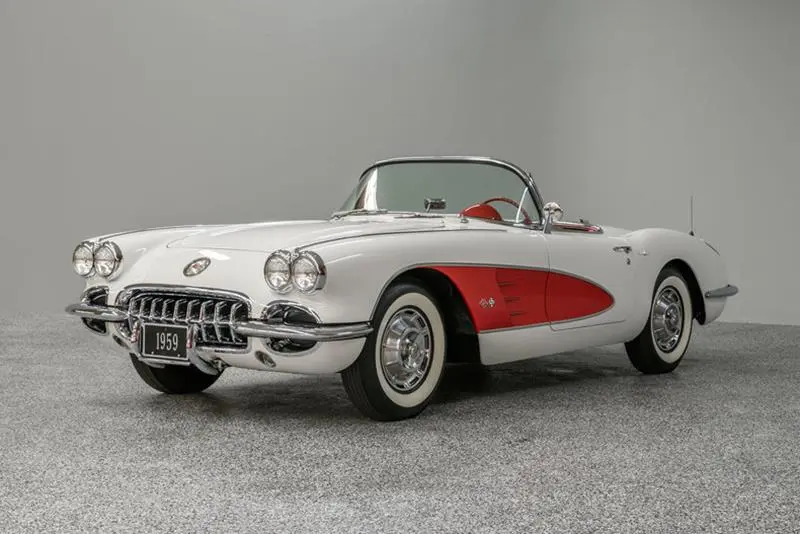
Production Numbers
Chevrolet sales of the 1959 Chevy Corvette totaled 9,670 units, a number that was just shy of the landmark 10,000 units that General Motors was now anxiously hoping to hit with its two-seater sports car. Although Chevy was not yet making a significant profit from sales of the Corvette, it was no longer costing Chevrolet money either. The modest numbers continued to point in the right direction, and both Corvette designers and engineers believed that they were on the brink of surpassing the 10,000 units/year number. Still, it was now clear that American car enthusiasts were finally embracing the Corvette as a serious sports car which meant that Chevrolet would continue moving forward with the development of an, as yet unrealized, second-generation Corvette. With prototype designs like the exceedingly expensive “Q-Corvette” and Bill Mitchell’s “XP-700” already envisioned, anticipation among General Motors executives, engineers, and designers was on the rise.
1959Corvette Specifications & Performance
See the complete breakdown of technical specifications for the 1959 Corvette, including engine, suspension, brakes, body dimensions, and power.
Read more: 1959 Corvette Specifications.
Engine & Transmission
Under the hood, performance options remained exactly the same as they had in 1958, and this was no bad thing. All engines were a version of a 283 CID V8, and performance depended on the version chosen. At the top of the line were two fuel injected versions of the engine, which produced either 250 or 290 horsepower, depending on which was chosen. The fuel injection engines had been introduced to great acclaim in 1957. There were two 2×4-barrel engine options that produced either 245 or 270 horsepower. The base models included a 4-barrel carburetor that was rated at 230 horsepower.
Performance
Road and Track tested the 1959 Corvette and was able to accelerate from 0 – 6o mph in 6.6 seconds in 283ci/270hp guise and Motor Trend tested the 283ci/250hp version and hit 0 – 6o mph in 7.8 seconds. The quarter mile is 14.5 seconds and 15.7 seconds respectively.
See complete 1959 Corvette specifications & performance.
1959 Corvette Vehicle Identification Numbers (VIN)
For all 1959 Corvettes, the location of the Vehicle Identification Number (VIN) is located on the driver-side doorpost. The VIN is also stamped at several locations on the Corvette frame.
Read more: 1959 Corvette VINs.
1959 Corvette Price & Options
Core Features & Factory Options
Options to add to the base model were similar to the 1958 options, and included a hardtop option, and upgraded suspension and a four-speed manual transmission. One new option introduced for the 1959 model year, however, was the sintered-metallic linings for brakes that had been developed by GM’s Delco-Moraine Division. The new linings made braking less harsh and also reduced the warm up time needed for maximum braking effectiveness. This option added just $26.90 to the price of the car.
Colors
Colors for 1959 included Tuxedo Black (1,594 units and 16.48%), Classic Cream (223 units and 2.31%), Frost Blue (1,024 units and 10.59%), Crown Sapphire (888 units and 9.18%), Roman Red (1,542 units and 15.95%), Snowcrest White (3,354 units and 34.68%) and Inca Silver (957 units and 9.90%).
Pricing
As it had every year since 1955, total production rose in 1959, this time to 9,670, which was almost exactly 500 more Corvettes than had been produced the previous year. The base price was up slightly, as well, from $3,591 to $3,875.
| CODE | DESCRIPTION | QUANTITY | RETAIL PRICE |
| 867 | Base Corvette Convertible | 9,670 | $3,875.00 |
| 101 | Heater | 8,909 | $102.25 |
| 102 | AM Radio, signal seeking | 7,001 | $149.80 |
| 107 | Parking Brake Alarm | 3,601 | $5.40 |
| 108 | Courtesy Lights | 3,601 | $6.50 |
| 109 | Windshield Washers | 7,929 | $16.15 |
| 121 | Radiator Fan Clutch | 67 | $21.55 |
| 261 | Sunshades | 3,722 | $10.80 |
| 276 | Wheels, 15 x 5.5 (5) | 214 | $0.00 |
| 290 | Whitewall Tires, 6.70 x 15 | 8,173 | $31.55 |
| 313 | Powerglide Automatic Transmission | 1,878 | $199.10 |
| 419 | Auxillary Hardtop | 5,481 | $236.75 |
| 426 | Power Windows | 587 | $59.20 |
| 440 | Two-Tone Paint Combination | 2,931 | $16.15 |
| 469 | 283ci, 245HP Engine (2×4 Carburetors) | 1,417 | $150.65 |
| 469C | 283ci, 270HP Engine (2×4 Carburetors) | 1,846 | $182.95 |
| 473 | Power Operated Folding Top | 661 | $139.90 |
| 579 | 283ci, 250HP Engine (Fuel Injection) | 175 | $484.20 |
| 579D | 283ci, 290HP Engine (Fuel Injection) | 745 | $484.20 |
| 675 | Positraction Rear Axle | 4,170 | $48.45 |
| 684 | Heavy Duty Brakes and Suspension | 142 | $425.05 |
| 685 | 4-Speed Manual Transmission | 4,175 | $188.30 |
| 686 | Metallic Brakes | 333 | $26.90 |
| 1408 | Blackwall Tires, 6.70 x 15 Nylon | – | – |
| 1625 | 24 Gallon Fuel Tank | – | – |
Read more: 1959 Corvette pricing and factory options.
1959 Corvette Gallery
There were few changes for the 1959 model year Corvette; perhaps GM figured people still needed time to absorb the 1958 styling. The styling was toned down a notch as the faux louvers disappeared from the hood (above) and (below) the trunk “spears” were gone. Years later the change is considered to be the correct move as 1959 / 1960 Corvettes generally get higher prices than the 1958 model. There were minor revisions to the instrument panel in 1959. The glass in front of the gauges was convex, which reduced the glare problem with the flat glass of the previous year.
See full 1959 Corvette Gallery


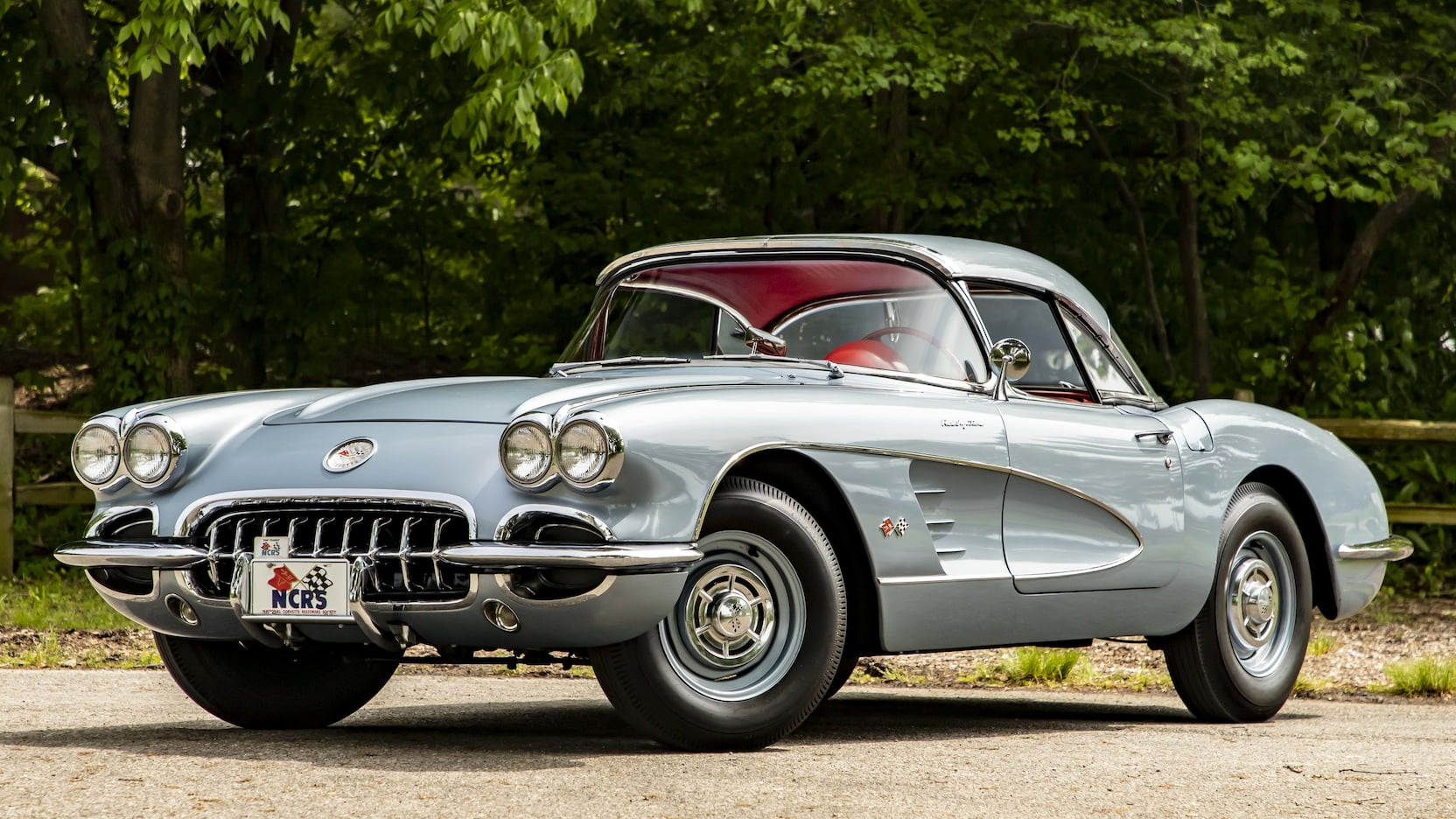
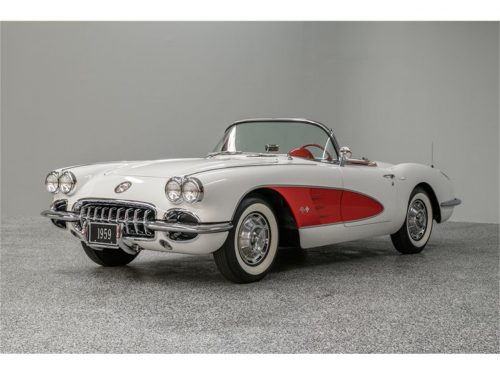
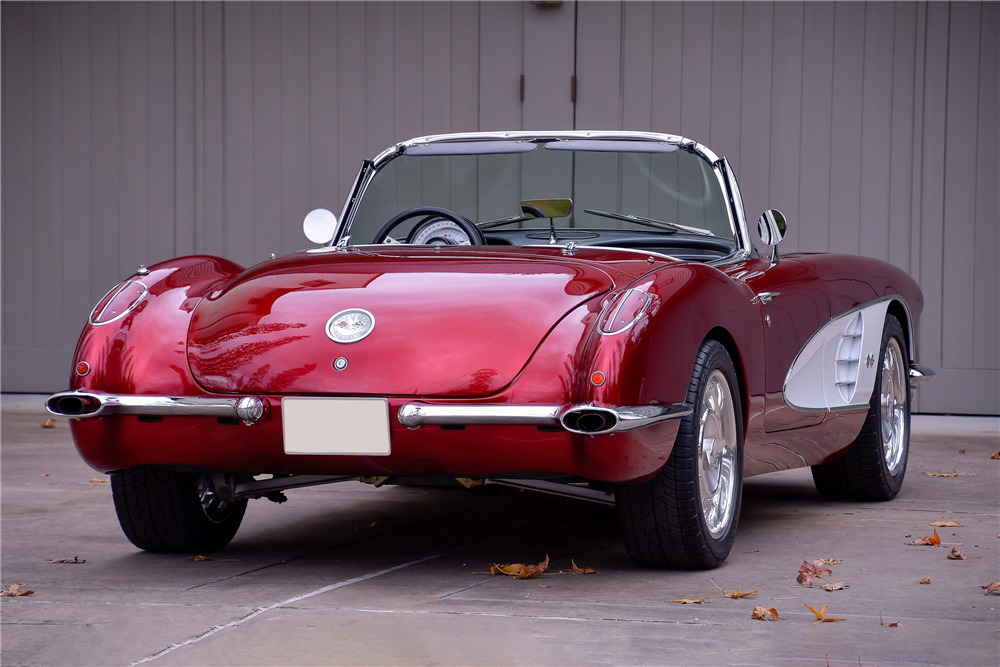
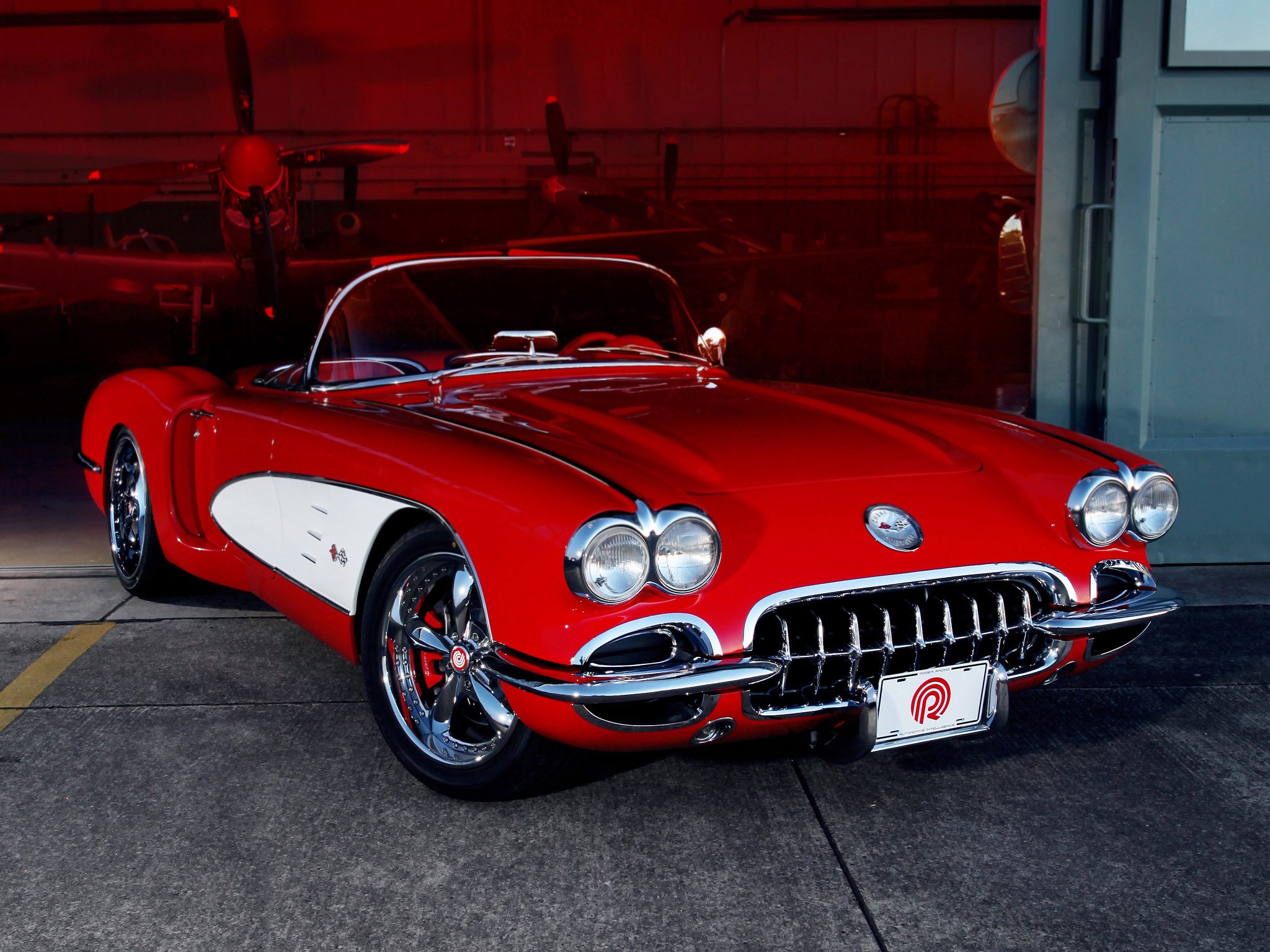
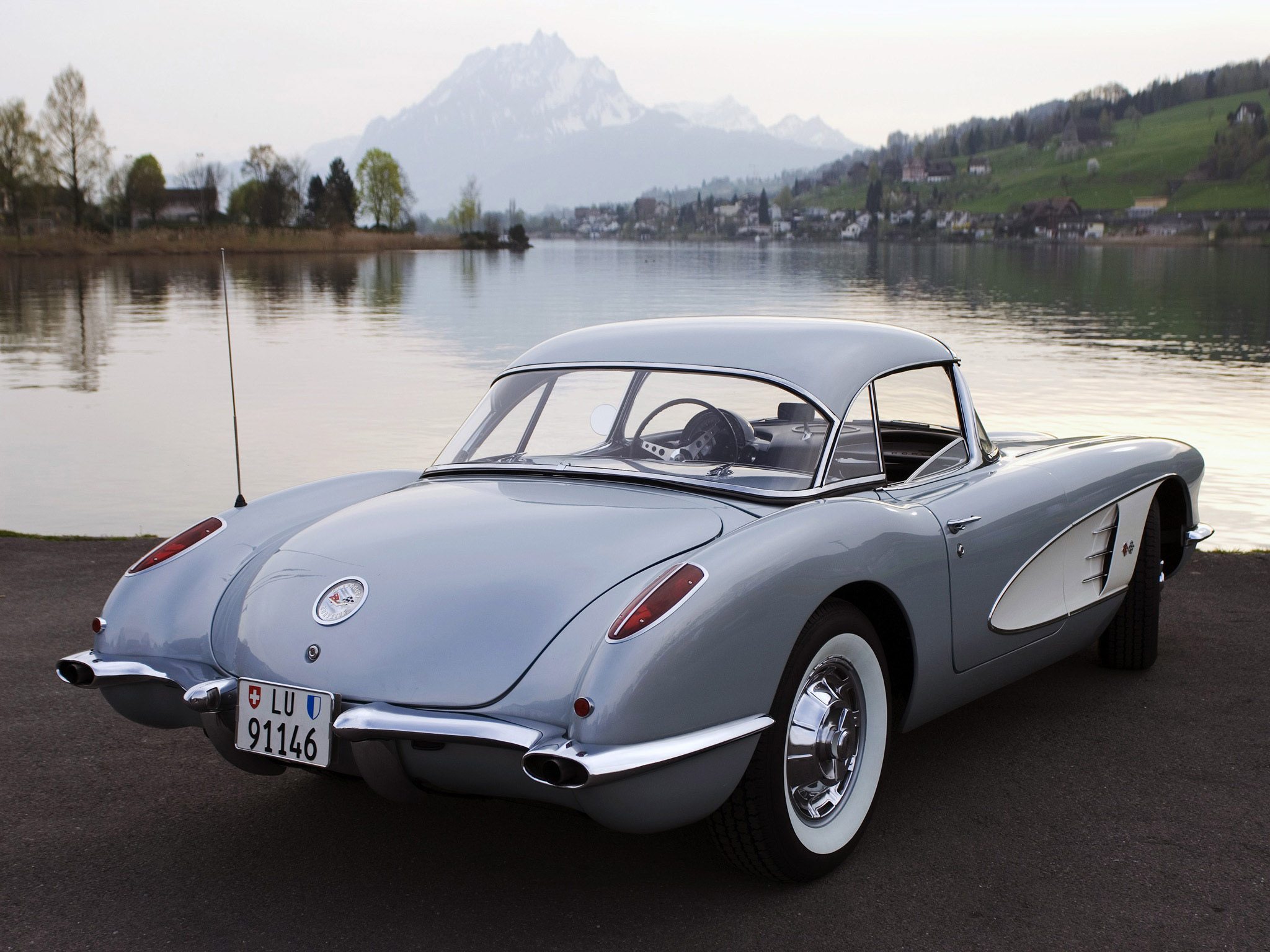
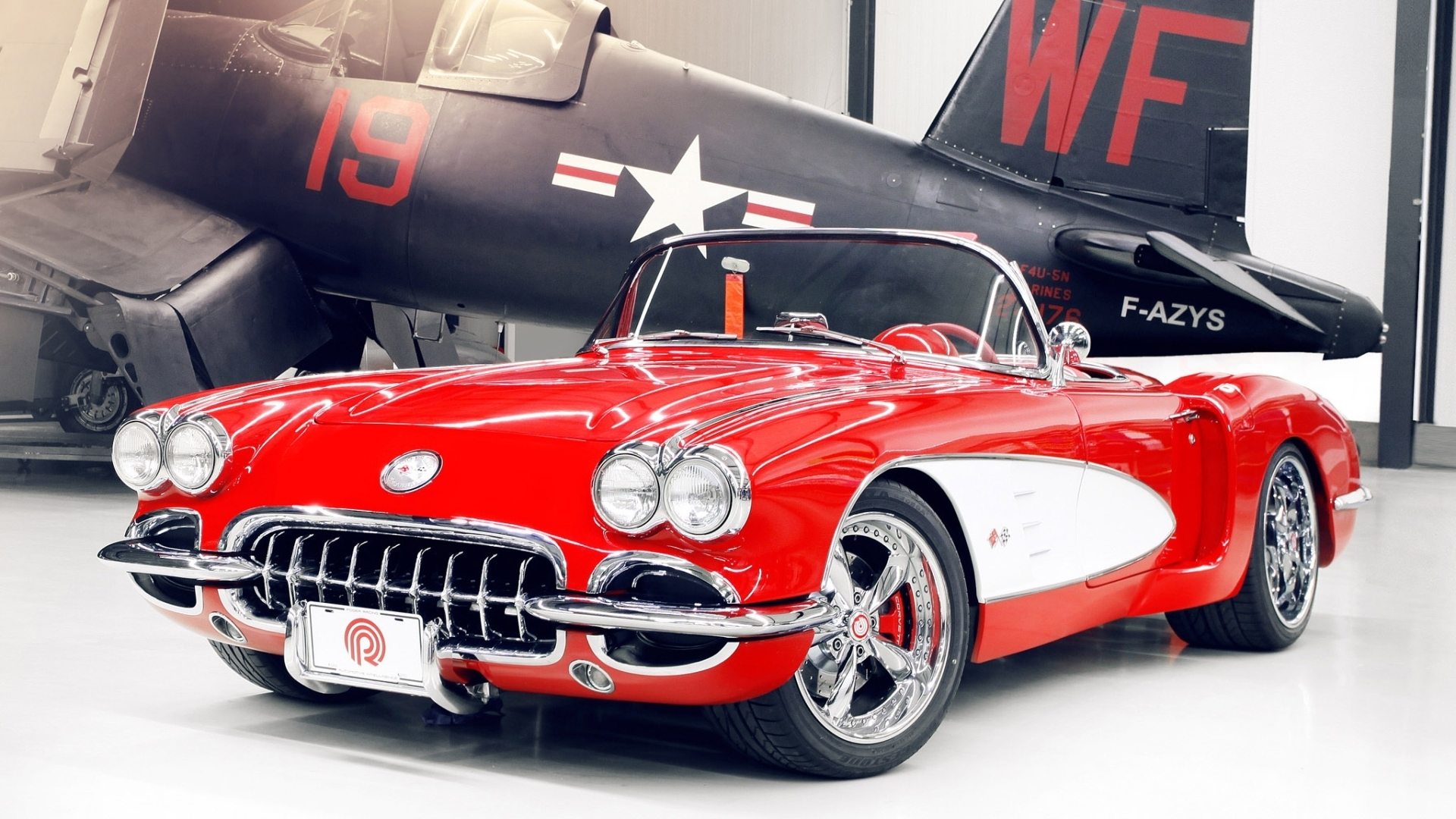
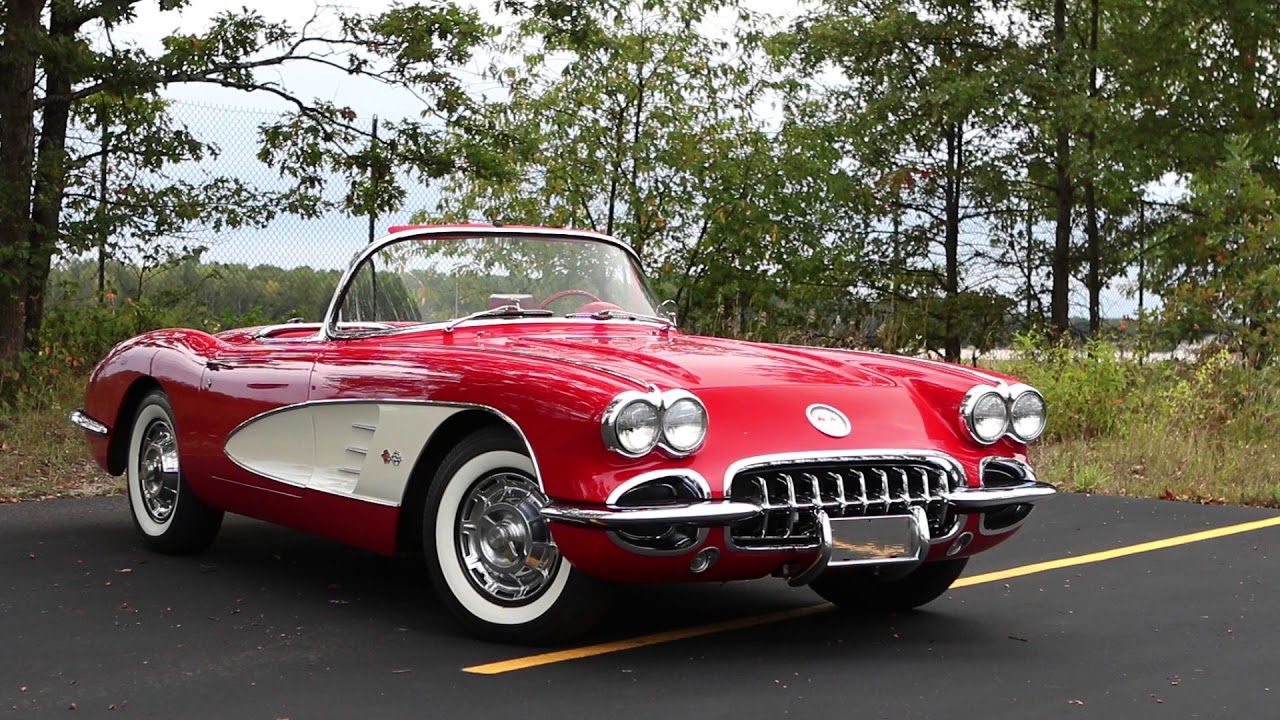
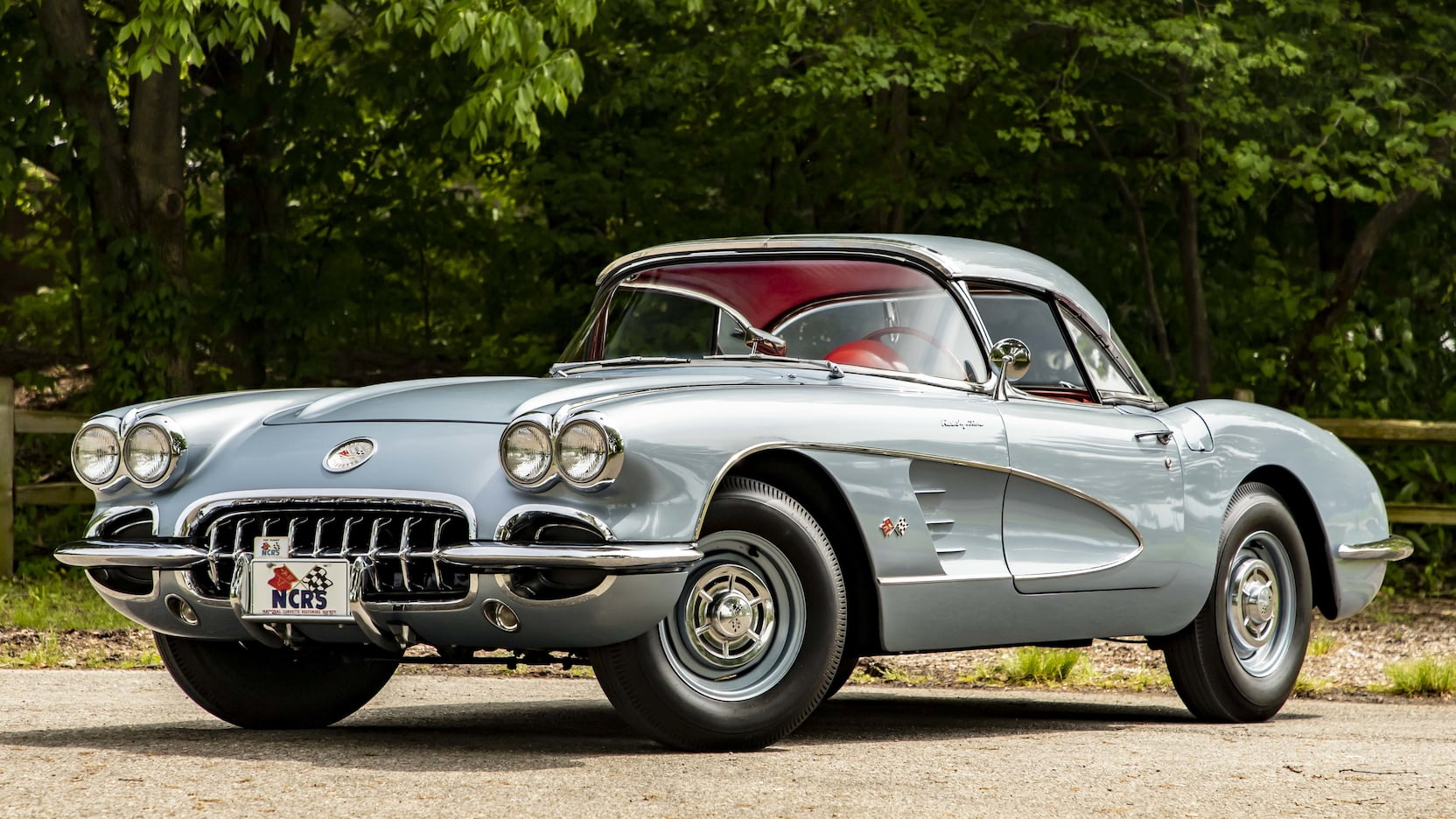

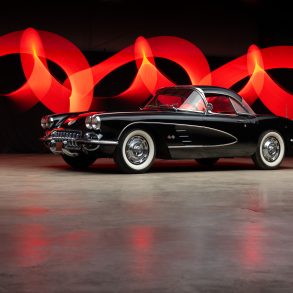
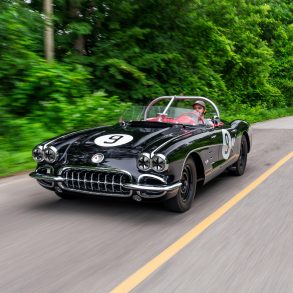
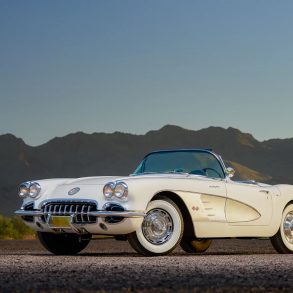
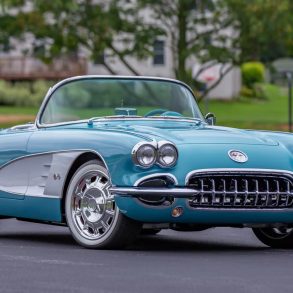
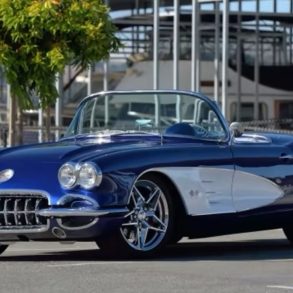

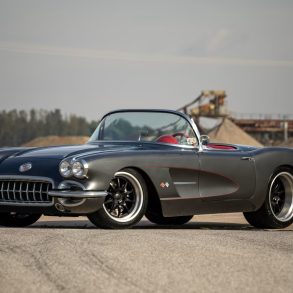

Hello,
Where can a guy buy a 1959 corvette for cheap, all I need is a website…?
I had a 59 when I was a teenager, got drafted in the Army, shipped out to Vietnam, had to sell it unfortunately, thank you so much.
Pretty much isn’t possible to buy one “cheap”.
I have one for sale. Upgraded 327. 4 spd. Interior and exterior great shape. White/ silver coves, red interior. Tan soft top.
RUNS GREAT! Recent tune up, new Wonderbar radio, rebuilt generator. Needs no restoration.
Charleston SC
$65k
Is your car still for sale?
What do you consider cheap?
Looking for a 1959 or 1960 C1 as a donor car for a Restomod. Nothing needs to match. Engine, trans, and chassis condition irrelevant – will trailer if needed. Work to be done in S. Nevada.